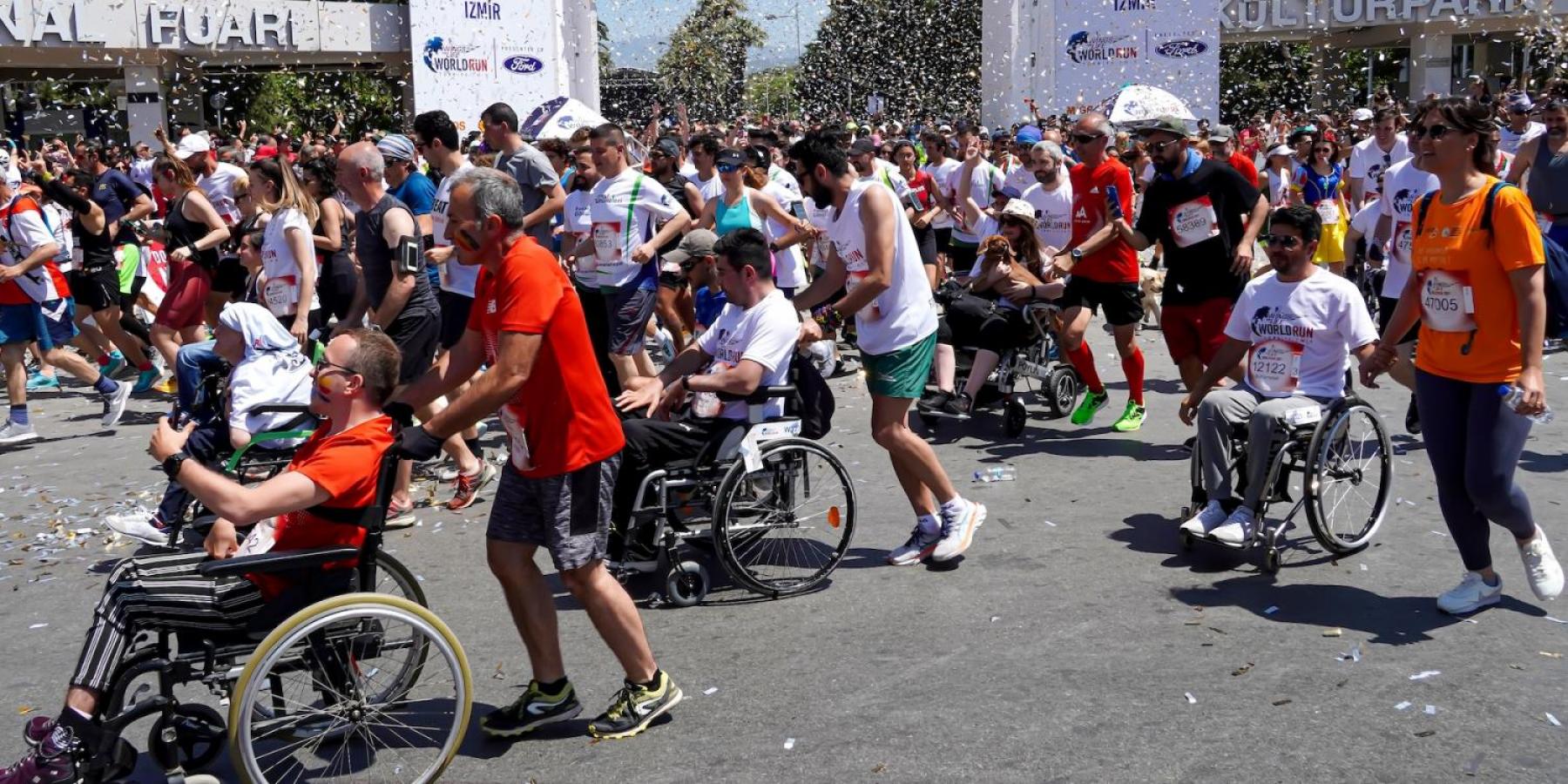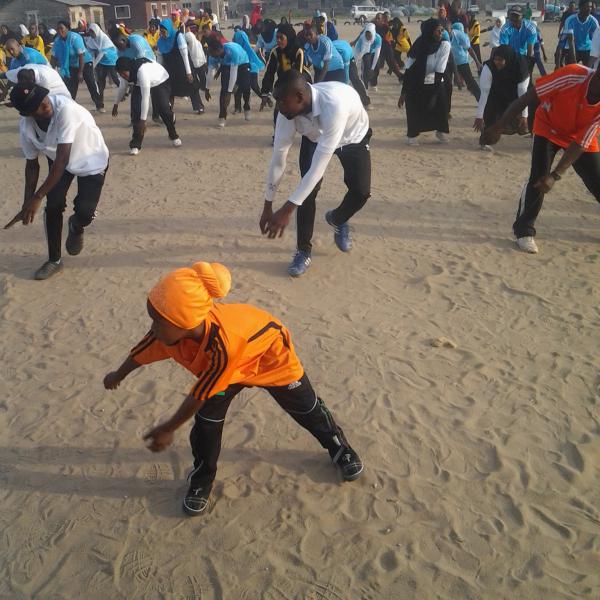Fast facts
-
Physical activity contributes to preventing and managing noncommunicable diseases such as cardiovascular diseases, cancer and diabetes. It improves overall well-being, significantly reduces symptoms of depression and anxiety, and enhances thinking, learning, and judgment skills.
-
Globally, 1 in 3 women and 1 in 4 men do not meet the global recommended levels of physical activity.
-
Up to 5 million deaths a year could be averted if the global population was more active.
-
People who are insufficiently active have a 20% to 30% increased risk of death compared to people who are sufficiently active.
-
More than 80% of the world's adolescent population is insufficiently physically active.
-
Levels of inactivity are twice as high in high-income countries compared to low-income countries.
What is physical inactivity?
Physical inactivity is a key risk factor for noncommunicable diseases, and the fourth leading cause of early death globally. Recent estimates show that approximately 31% of the world's population does not get enough physical activity to protect their health. The World Health Organization recommends that adults should get the equivalent of two and a half hours of moderate-to-vigorous physical activity each week. Children should get even more, at least one hour a day. For those who want to maintain or reduce their weight, more activity may be needed. Walking, cycling, swimming, sports, and active recreation and play are all ways to be active, but there are many more.
The health benefits of physical activity are well established and include a lower risk of noncommunicable diseases including cardiovascular disease, hypertension, diabetes, and breast and colon cancer. Additionally, physical activity has positive effects on mental health, delays the onset of dementia, and can help maintain a healthy weight.
Too much inactivity on the other hand has negative impacts on health, health systems, the environment, the economy, community well-being and quality of life.
Physical inactivity: a global problem?
Physical inactivity is a concern globally, but levels are the highest in high-income countries. The prevalence of physical inactivity in high-income countries in 2016 was 36.8%, more than double the prevalence in low-income countries, at 16.2%. Prevalence rates in middle-income countries were 26%. Between 2001 and 2016, the prevalence of inactivity rose by more than 5 percent in high-income Western countries and in Latin America and Caribbean, while it remained stable in most of the world and even went down in east and southeast Asia. In nearly all countries around the world, women were more likely to be inactive than men.


Globally, 81% of adolescents aged 11-17 years were insufficiently physically active in 2016. Adolescent girls were less active than adolescent boys, with 85% vs. 78% not getting at least the recommended 60 minutes of moderate to vigorous physical activity per day.
Higher rates of inactivity are partly due to leisure time spent sitting - watching television, playing video games, and using the computer. Physical activity associated with work, tasks at home, and transportation has also declined due to economic growth, technological advancements, and social changes.
This reinforces the fact that staying active is not purely an individual choice – it is largely influenced by the socioeconomic context and surrounding environment where we live. People are more likely to be active, for example, if they live near parks or playgrounds, in neighbourhoods with sidewalks or bike paths, or close enough to work, school, or shopping to safely walk or cycle. People are less likely to be active if they live in sprawling suburbs designed for driving or in neighbourhoods without parks or recreation opportunities. This is why national policy needs to be implemented to encourage active transportation, such as walking and cycling, and to promote active recreation and sports in leisure time.
What disease are linked to physical inactivity?
Physical inactivity is an established risk factor for premature mortality and several non-communicable diseases. It has been estimated that physical inactivity causes 6%–10% of the cases of premature mortality, coronary heart disease, type 2 diabetes, and breast cancer and colon cancer globally. It is also closely linked to obesity in many cases.
Policies to support physical activity
Countries and communities must take action to provide everyone with more opportunities to be active. This requires a whole-of-society collective effort, both national and local, to implement solutions to enable and encourage physical activity that are appropriate to a country’s cultural and social environment.
Local and state governments have several policy tools for shaping people’s physical surroundings, such as planning, zoning, and other regulations, as well as setting budget priorities for transportation and infrastructure.
Policies to increase physical activity aim to ensure that:
-
Walking, cycling and other forms of active non-motorized forms of transport are accessible and safe for all;
-
Workplace policies encourage active commuting and opportunities for being physically active during the work day;
-
Childcare, schools and higher education institutions provide spaces and facilities for all students to spend their free time actively;
-
Primary and secondary schools provide quality physical education that supports children in developing behaviour patterns that will keep them physically active throughout their lives;
-
Community-based and school-sport programmes provide appropriate opportunities for all ages and abilities;
-
Sports and recreation facilities provide opportunities for everyone to access and participate in a variety of different sports, dance, exercise and active recreation; and
-
Health care providers advise and support patients to be regularly active.
In 2018 WHO launched a new Global Action Plan on Physical Activity 2018-2030 which outlines four policy actions areas and 20 specific policy recommendations and actions for a system-wide response to help people increase their levels of physical activity. In 2018, the World Health Assembly agreed on a global target to reduce physical inactivity by 15% by 2030 and align with the Sustainable Development Goals.
Sources:
Harvard T.H. Chan School of Public Health: A Global Look at Rising Obesity Rates [Accessed March 2022]
The Lancet:Worldwide trends in insufficient physical activity from 2001 to 2016: a pooled analysis of 358 population-based surveys with 1·9 million participants [Accessed March 2022]
British Journal of Sports Medicine: Physical inactivity and non-communicable disease burden in low-income, middle-income and high-income countries [Accessed March 2022]
This page was reviewed on 06/04/2022




